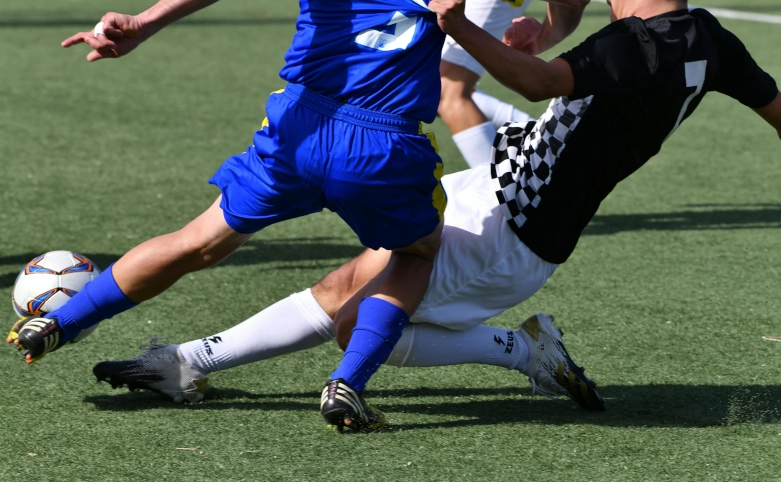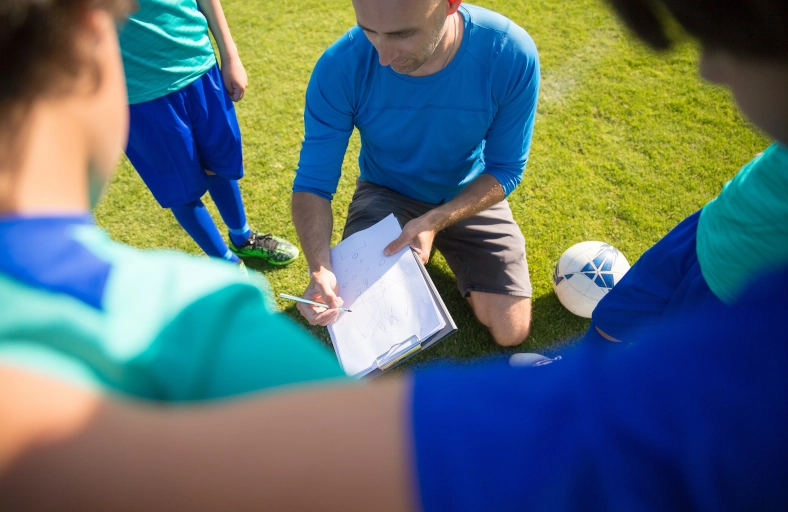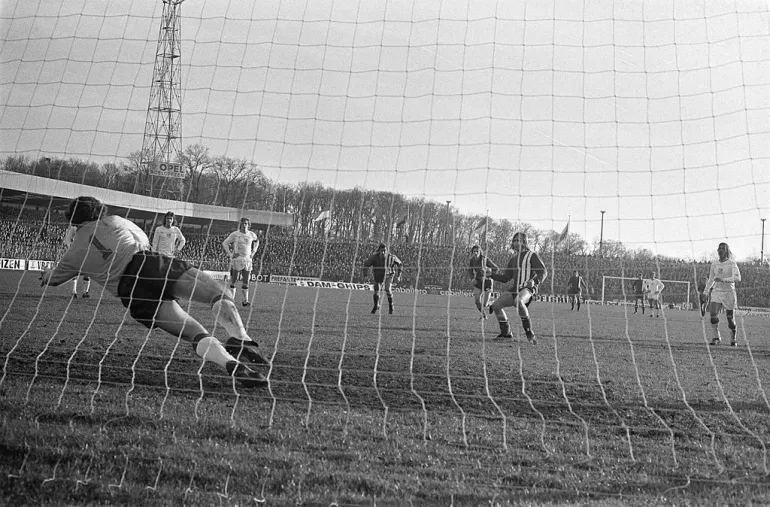How to tackle in football - Pro tips for defenders

Are you looking to improve your defensive skills on the football pitch? Knowing how to tackle in football is one of the most essential skills for players in every position, not just defenders. Proper tackling techniques can help you avoid unnecessary fouls, maintain possession, and minimize the risk of injury. This guide covers the safest and most effective tackling techniques professional players use to ensure you’re prepared for any defensive situation.
Why Proper Tackling Technique Matters
Understanding and applying correct tackling techniques helps you play defensively without compromising safety. Here’s why every football player should focus on improving their tackling:
- Avoid unnecessary fouls and cards
- Minimize injury risks to yourself and your opponents
- Boost defensive stability in crucial moments
- Gain ball possession more consistently
With these benefits in mind, let’s dive into the fundamental techniques every footballer should know.
Essential Football Tackling Techniques
Whether playing against fast strikers or trying to regain possession in a high-stakes match, these tackling methods will serve you well. Here’s how to tackle effectively based on the specific game situations.
1. Shoulder-to-Upper Body Tackle
This tackling technique is highly effective when you’re evenly matched in speed with your opponent. It allows you to subtly shift the opposition player’s balance to gain control of the ball.
- Position: Align your shoulder with your opponent’s upper body.
- Form: Bend your arm slightly to add stability and power without overcommitting.
- Execution: Use controlled force to shift your opponent off their intended path — your goal is to redirect them, not push with excessive force.
- Objective: Once their balance is disrupted, gain possession.
This approach enables you to take control without fouling as you guide the opponent out of their attack.
2. Speed-Based Tackling Strategy
You’ll need a different approach when facing a faster opponent. The key here is timing and positioning.
- Build speed: Gain momentum first to improve positioning.
- Position Your Shoulder: Place yourself between the opponent and the ball.
- Tackle timing: Intercept when they step with their dribbling foot. This foot usually won’t have control, making it an ideal moment for a clean tackle.
- Maintain stability: Keep a low centre of gravity and stay balanced.
This technique helps you make a safe, effective tackle while reducing the risk of fouling a faster player.
3. Standing Tackle: Your Go-To Move
Standing tackles are ideal in most situations, as they maintain stability and are less risky than slides.
- Stay on Your Feet: Avoid going to the ground unless absolutely necessary.
- Focus on the ball: Watch the ball rather than the opponent’s body.
- Position Yourself Well: React quickly to any shifts in movement.
- Adjust as Needed: Keep your knees bent and be ready to pivot or adjust your positioning.
Mastering standing tackles is essential, especially in high-pressure situations where losing footing could lead to a costly counterattack.
4. Sliding Tackle: Use with Caution
While sliding tackles can be effective, they should be reserved as a last resort. A well-timed slide can prevent a breakthrough but risks a foul if misjudged.
- Approach from the side: Avoid sliding from behind to reduce the chance of fouling.
- Timing: Slide only when you’re sure you can contact the ball.
- Safety: Keep studs down and avoid high tackles.
- Recovery plan: Be ready to regain your footing if the tackle fails.
Sliding from the side is more controlled and reduces the likelihood of a foul, especially if you time it well and connect with the ball first.
Mastering Timing in Tackling
Timing is the foundation of a successful tackle. Perfectly timed tackles give you a strong advantage and prevent fouls. Here are some timing tips for effective tackling:
- Observe Your Opponent’s Movements: Watch for patterns in their dribbling or shifting.
- Wait for the Right Moment: Patience is crucial; avoid rushing in.
- Strike at the Right Time when the ball is furthest from your opponent’s control.
- Maintain Defensive Positioning: If you miss, stay in position to prevent an immediate counter.
- Practice Reading Movements: Training with a partner can help you develop quick reflexes.
By focusing on timing, you’ll find it easier to win the ball cleanly and avoid penalties.
Pro Tips for Tackling Success
Want to tackle like a pro? Here are advanced tips from professional defenders that can give you an edge on the field:
- Analyze Opponent Tendencies: Identify their preferred moves to anticipate their actions.
- Stay Focused on the ball: Avoid watching their feet or body; the ball is your target.
- Use a Strong Defensive Stance: Keep a low centre of gravity and your knees slightly bent.
- Position Your Body Strategically: Always keep yourself between the opponent and your goal.
- Have a Backup Plan: If you lose balance, be prepared to quickly adjust.
Safety Tips for Tackling in Football
Safety is essential in tackling. Clean, safe tackles protect you, prevent fouls and help maintain sportsmanship. Here are some essential safety guidelines:
- Avoid Excessive Force: Keep tackles controlled and avoid unnecessary aggression.
- Keep Studs Down: High tackles increase the chance of fouls and injury.
- Approach with Respect: Avoid reckless or risky tackles that can lead to injuries.
- Follow Referee Instructions: Respect the game and play by the rules.
By prioritizing safety, you ensure fair play and uphold a positive, respectful approach to defence.
Common Tackling Mistakes to Avoid
Avoiding these mistakes can significantly improve your tackling game:
- Rushing In: Taking action too soon can lead to poor positioning.
- Tackling from Behind: This high-risk move often results in fouls.
- Leading with Studs: Always keep studs down for a safer tackle.
- Losing Focus on the ball: Focusing on your opponent instead of the ball reduces your accuracy.
- Using Unnecessary Force: Excessive force can lead to penalties and injuries.
Tackling Practice Drills
Practice is vital to mastering these techniques. Try these drills to improve your tackling skills:
- One-on-One Defensive Drills: Practice controlling your opponent in a contained area.
- Shadow Defending Exercises: Follow a partner’s movements without making contact.
- Timing Drills: Work with a partner to practice well-timed tackles.
- Recovery Position Training: Practice regaining balance after a tackle.
- Game Simulation Drills: Recreate real-game scenarios to hone your defensive skills.
By practising these drills regularly, you’ll develop confidence in your tackling abilities and refine your timing and technique. Check our drills section for more details.
Conclusion
Tackling is an art that requires precision, timing, and awareness. By mastering the proper techniques and focusing on timing and safety, you can become an exceptional defender and contribute to your team’s success. Remember, the best tackles win the ball cleanly while respecting your opponent and minimizing the risk of injury.
In the video below, the Tactica team demonstrates how to tackle in football. The audio could be better, but you will get the idea. Follow their tips and combine them with our other defensive tips, and you will win all one-on-one situations against top players.



